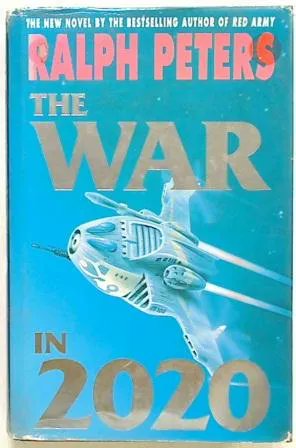Skallagrim
Well-known member
Interesting thread, @Husky_Khan! I really liked the book, although heretofore, I'd only considered the tech as something of a "world-building" element & hadn't really made it the focus of my attention.
In many ways, this book is "a cyberpunk future without the cyberpunk". If that makes sense...
Maybe I've misunderstood the book when I read it, but what @Husky_Khan quotes & discusses supports my original understanding: Japan has a weapon that can instantly render a fate worse than death unto an entire city, at minimum. It's suggested that the weapon can be used on an even larger scale, too.
It's not a terror weapon. It's the equivalent of a very high-yield nuke, but without any of the radiological mess, and with the added "bonus" that they can use it as a terror weapon. (They could also use it to kill everyone, but they do this horrible shit instead, because it'll demoralise the enemy.)
The unrealistic thing is that the USA apparently figured out this tech, but didn't develop it. Which is insane. Of course they would. I can believe they'd reject the 'fate-worse-than-death' variant that Japan went for, but surely they'd fully develop the 'instant death' version and have that at the ready to be deployed.
(Realistically, if such a weapon, on the scale suggested here, were to exist... then there would very quickly be an international treaty that boil down to "if anyone uses this on civilian targets, the response shall be immediate nuclear annihilation". Of course, to be fair, the author of the book presumably agrees with me on that, because the book is very much making a point.)
In many ways, this book is "a cyberpunk future without the cyberpunk". If that makes sense...
...Yeah, I'm sorry, but the more I read this, the more it becomes obvious that the plot requires everyone on the American and Soviet leaderships to have dropped fifty IQ points, while everyone on the Japanese side went full bore Imperial Japanese Buffoon again.
The President and his cabinet basically just being completely impotent over a goddamn terror weapon being used cut the already fraying suspension of disbelief rope with a chainsaw. smh
Maybe I've misunderstood the book when I read it, but what @Husky_Khan quotes & discusses supports my original understanding: Japan has a weapon that can instantly render a fate worse than death unto an entire city, at minimum. It's suggested that the weapon can be used on an even larger scale, too.
It's not a terror weapon. It's the equivalent of a very high-yield nuke, but without any of the radiological mess, and with the added "bonus" that they can use it as a terror weapon. (They could also use it to kill everyone, but they do this horrible shit instead, because it'll demoralise the enemy.)
The unrealistic thing is that the USA apparently figured out this tech, but didn't develop it. Which is insane. Of course they would. I can believe they'd reject the 'fate-worse-than-death' variant that Japan went for, but surely they'd fully develop the 'instant death' version and have that at the ready to be deployed.
(Realistically, if such a weapon, on the scale suggested here, were to exist... then there would very quickly be an international treaty that boil down to "if anyone uses this on civilian targets, the response shall be immediate nuclear annihilation". Of course, to be fair, the author of the book presumably agrees with me on that, because the book is very much making a point.)




